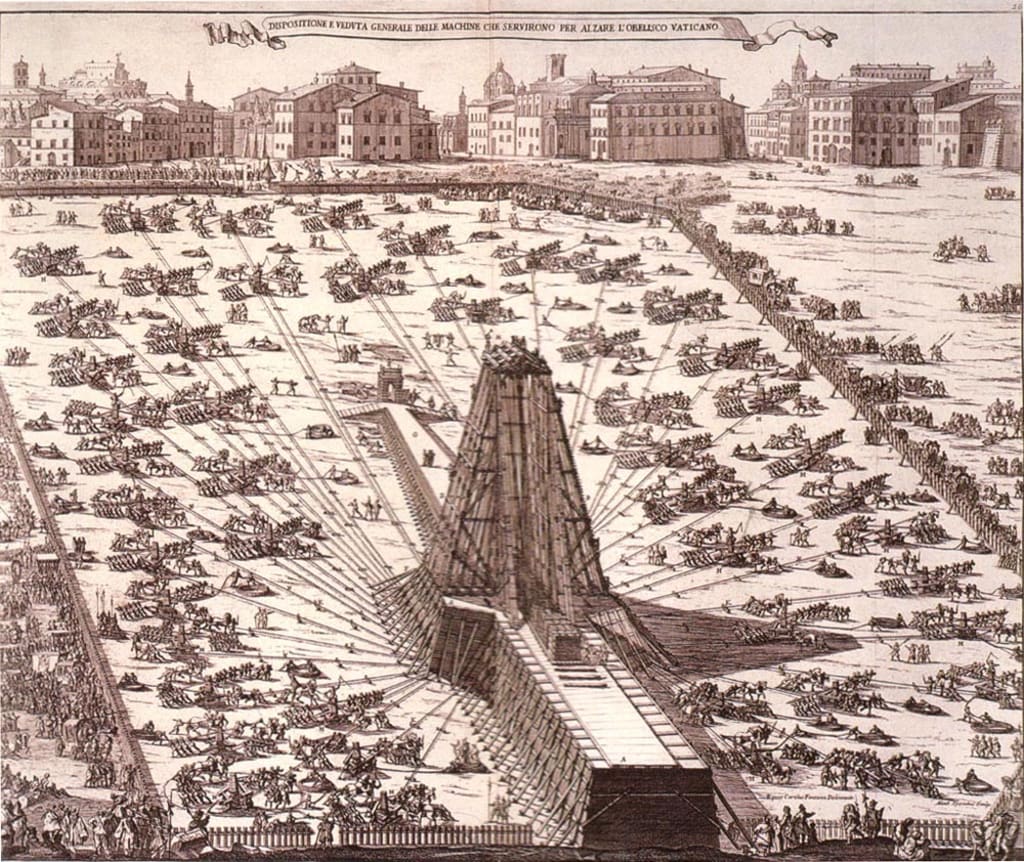How the obelisks reached Rome
Egyptian Obelisk Transport: The engineering techniques used to transport massive stone obelisks from quarries to their final locations, demonstrating incredible logistical capabilities.

The story of how obelisks, towering monoliths originally erected in ancient Egypt, reached Rome is a fascinating tale of engineering marvels, political power, and cultural assimilation. These monumental structures, characterized by their tall, slender form and pyramid-shaped tops, were not only symbols of divine power in Egypt but also became potent emblems of Rome’s imperial might and its admiration for Egyptian civilization. Today, several obelisks stand proudly in Rome, each with its own unique journey from the banks of the Nile to the heart of the Roman Empire.
Obelisks were originally constructed as religious monuments in Egypt, dedicated to the sun god Ra. They were typically carved from a single piece of granite, quarried in Aswan, and then transported hundreds of miles to their final locations, usually at temple entrances. The logistics of moving these massive stones, some weighing over 300 tons, were a testament to the ancient Egyptians’ engineering skills and their deep religious devotion.
The transfer of obelisks from Egypt to Rome began during the reign of Augustus, the first Roman emperor, following his victory over Mark Antony and Cleopatra in 31 BCE. This conquest marked the beginning of Egypt as a Roman province, and Augustus sought to symbolize his dominance and the integration of Egyptian culture into the Roman world by transporting these magnificent structures to Rome. The first obelisk to make this journey was erected in the Circus Maximus, the great chariot racing stadium in Rome, around 10 BCE.
Transporting an obelisk from Egypt to Rome was a monumental task that required advanced engineering and meticulous planning. The process typically began with the careful extraction of the obelisk from its original site. This involved cutting the monolith from its base and then laying it down gently onto wooden sledges. These sledges were dragged to the Nile River using a combination of human and animal power, and possibly lubricants to reduce friction.
Once at the river, the obelisk was loaded onto a specially constructed barge. This barge had to be large enough to support the weight of the obelisk and balanced to ensure a stable journey down the Nile. From the Nile, the obelisk would be transported to Alexandria, the principal port of Egypt, where it was prepared for the sea voyage to Rome. This sea journey was fraught with challenges, including the need for favorable weather conditions and the risk of storms.
Upon reaching the coast of Italy, the obelisk was unloaded and transported overland to Rome. This part of the journey often involved the construction of special roads or tracks to accommodate the massive weight of the obelisk. In Rome, the final step was the re-erection of the obelisk, which was no less challenging than its transportation. Roman engineers, known for their ingenuity, developed sophisticated techniques to raise these colossal stones upright. This involved the use of a complex system of ropes, pulleys, and winches, as well as a large workforce.
The erection of obelisks in Rome served multiple purposes. Politically, it demonstrated the emperor’s power and Rome’s dominance over Egypt. Culturally, it showcased Rome’s admiration and appropriation of Egyptian art and religion. Additionally, the obelisks were often placed in significant public spaces, such as the Circus Maximus, the Vatican, and the Piazza del Popolo, where they became focal points of architectural and urban design.
Over the centuries, several more obelisks were transported to Rome by various emperors. Notable among them is the Lateran Obelisk, the tallest ancient obelisk in Rome, which was brought to the city by Emperor Constantius II in the 4th century CE. Another significant obelisk is the Flaminian Obelisk, originally erected by Pharaoh Seti I and later moved to the Piazza del Popolo by Emperor Augustus.
The obelisks not only enhanced the architectural grandeur of Rome but also influenced Roman culture and religious practices. The presence of these ancient Egyptian symbols in Rome reflected the blending of Roman and Egyptian beliefs, particularly the worship of the sun god, which found a parallel in Roman worship practices.
As researchers continue to study these monumental obelisks, more details are expected to emerge about their transportation, erection, and significance. This ongoing research will likely uncover further aspects of the engineering marvels employed by the Romans and their cultural interactions with ancient Egypt. By delving deeper into these findings, historians hope to gain a more comprehensive understanding of how these awe-inspiring structures were integrated into the fabric of Roman life and how they continue to captivate our imagination today.
About the Creator
Marveline Merab
“History never repeats itself. Man always does.”
― Voltaire
Enjoyed the story? Support the Creator.
Subscribe for free to receive all their stories in your feed. You could also pledge your support or give them a one-off tip, letting them know you appreciate their work.






Comments
There are no comments for this story
Be the first to respond and start the conversation.